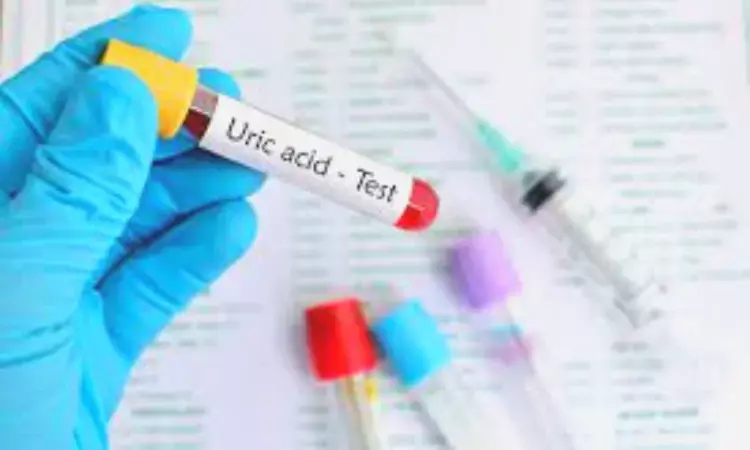- Home
- Medical news & Guidelines
- Anesthesiology
- Cardiology and CTVS
- Critical Care
- Dentistry
- Dermatology
- Diabetes and Endocrinology
- ENT
- Gastroenterology
- Medicine
- Nephrology
- Neurology
- Obstretics-Gynaecology
- Oncology
- Ophthalmology
- Orthopaedics
- Pediatrics-Neonatology
- Psychiatry
- Pulmonology
- Radiology
- Surgery
- Urology
- Laboratory Medicine
- Diet
- Nursing
- Paramedical
- Physiotherapy
- Health news
- Fact Check
- Bone Health Fact Check
- Brain Health Fact Check
- Cancer Related Fact Check
- Child Care Fact Check
- Dental and oral health fact check
- Diabetes and metabolic health fact check
- Diet and Nutrition Fact Check
- Eye and ENT Care Fact Check
- Fitness fact check
- Gut health fact check
- Heart health fact check
- Kidney health fact check
- Medical education fact check
- Men's health fact check
- Respiratory fact check
- Skin and hair care fact check
- Vaccine and Immunization fact check
- Women's health fact check
- AYUSH
- State News
- Andaman and Nicobar Islands
- Andhra Pradesh
- Arunachal Pradesh
- Assam
- Bihar
- Chandigarh
- Chattisgarh
- Dadra and Nagar Haveli
- Daman and Diu
- Delhi
- Goa
- Gujarat
- Haryana
- Himachal Pradesh
- Jammu & Kashmir
- Jharkhand
- Karnataka
- Kerala
- Ladakh
- Lakshadweep
- Madhya Pradesh
- Maharashtra
- Manipur
- Meghalaya
- Mizoram
- Nagaland
- Odisha
- Puducherry
- Punjab
- Rajasthan
- Sikkim
- Tamil Nadu
- Telangana
- Tripura
- Uttar Pradesh
- Uttrakhand
- West Bengal
- Medical Education
- Industry
TyG Index Exhibits Nonlinear Association with Hyperuricemia, states new study

Researchers have found that the triglyceride-glucose (TyG) index shows a nonlinear and reverse U-shaped relationship with hyperuricemia. This significant finding emerged from a cross-sectional study using data from the National Health and Nutrition Examination Survey (NHANES) conducted between 2011 and 2018, involving 8572 participants. This study was published in the journal Lipids in Health and Disease by Qui L. and colleagues.
While the epidemiological risk factors of metabolic diseases linked to hyperuricemia are well-documented, there is limited evidence regarding the nonlinear relationship between the TyG index and hyperuricemia. Hyperuricemia, characterized by high levels of uric acid in the blood, is a known risk factor for various metabolic and cardiovascular diseases. The TyG index, a reliable surrogate marker for insulin resistance, is computed as Ln [triglycerides (mg/dL) × fasting glucose (mg/dL)/2].
This cross-sectional study analyzed data from NHANES collected between 2011 and 2018, including 8572 participants. The primary outcome was the presence of hyperuricemia. Researchers employed weighted multiple logistic regression, subgroup analysis, generalized additive models, smooth fitting curves, and two-piecewise linear regression models to explore the association between the TyG index and hyperuricemia.
• The study revealed a nonlinear and reverse U-shaped association between the TyG index and hyperuricemia, with an inflection point at a TyG index of 9.69.
• In the regression model adjusting for all confounding variables, the odds ratio (OR) for the association between TyG and hyperuricemia was 2.34 (95% confidence interval [CI], 1.70-3.21).
• The OR (95% CI) before the inflection point was 2.64 (2.12-3.28), indicating a strong positive association.
• However, beyond the inflection point, the OR significantly decreased to 0.32 (0.11-0.98).
• Additionally, significant interactions were observed in analyses stratified by gender, BMI, hypertension, and diabetes.
The findings highlight a complex relationship between the TyG index and hyperuricemia. Initially, higher TyG index values are strongly associated with an increased risk of hyperuricemia. However, after reaching an inflection point, further increases in the TyG index correlate with a reduced risk. This reverse U-shaped relationship underscores the importance of considering nonlinear dynamics in metabolic risk assessments.
This study concludes that there is a strong positive connection between the TyG index and hyperuricemia up to a certain threshold, beyond which the relationship reverses. These findings necessitate further prospective studies to validate and understand the underlying mechanisms. Understanding this nonlinear relationship can aid in better risk stratification and management of hyperuricemia in clinical practice.
Reference:
Dr Riya Dave has completed dentistry from Gujarat University in 2022. She is a dentist and accomplished medical and scientific writer known for her commitment to bridging the gap between clinical expertise and accessible healthcare information. She has been actively involved in writing blogs related to health and wellness.
Dr Kamal Kant Kohli-MBBS, DTCD- a chest specialist with more than 30 years of practice and a flair for writing clinical articles, Dr Kamal Kant Kohli joined Medical Dialogues as a Chief Editor of Medical News. Besides writing articles, as an editor, he proofreads and verifies all the medical content published on Medical Dialogues including those coming from journals, studies,medical conferences,guidelines etc. Email: drkohli@medicaldialogues.in. Contact no. 011-43720751


